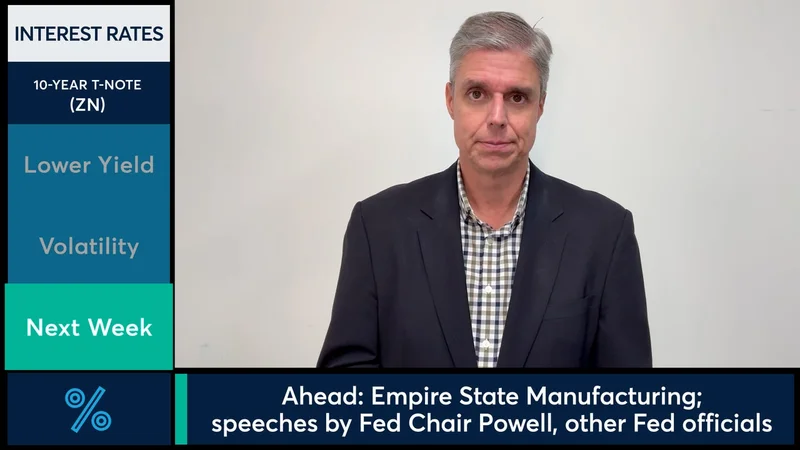So, the number-crunchers on Wall Street are losing their minds again because a line on a chart wiggled. The 10-year Treasury yield briefly falls below 4% as investors buy bonds for a trade war safe haven, and the financial news channels treated it like the moon landing.
Let’s be real. For most people, the 10-year Treasury yield might as well be the atmospheric pressure on Jupiter. It’s an abstraction. But what’s not an abstraction is the 6.4% mortgage rate you just got quoted, or the soul-crushing APR on that new car you desperately need. And that, my friends, is where this whole shell game gets personal.
They want you to believe this is all some complex, unknowable force of nature. It’s not. It’s a system, and you’re the one paying for it.
The Fed's Useless Light Switch
Everyone got excited back in September when the Federal Reserve finally cut its benchmark rate. "Relief is here!" the headlines screamed. Your mortgage rate, however, probably just shrugged. Why? Because the Fed's rate is for chumps. It’s a short-term number that mostly affects how banks borrow from each other overnight. Your 30-year mortgage? That ain't the Fed's territory.
The Fed’s rate is like a guy flicking a light switch in his living room, hoping it will change the weather outside. Meanwhile, the 10-year Treasury yield is the actual power grid. It’s the long-term bet on the health of the entire economy, and it’s the number that really dictates whether you can afford to buy a house.
I saw one "expert" calmly explain that mortgage rates "typically run about 1.5% to 2.0% higher than the 10-year Treasury yield." Let me translate that for you: Lenders look at the government's baseline borrowing cost—let's call it 4%—and then slap their own massive premium on top just for the privilege of letting you have a home. What a deal.
This setup is pure genius if you're a bank or a politician. The Fed makes a big show of "cutting rates," and everyone feels like something good is happening. But when your mortgage payment doesn't budge, who do you blame? The bank points to the bond market. The bond market points to inflation. The Fed points to its press release. It's a perfect circle of finger-pointing, and you're stuck in the middle with the bill. So, what exactly is the point of the Fed's grand announcements if the number that actually matters is doing its own thing?

A Tug-of-War Rigged Against You
So what’s making this all-important 10-year yield bounce around like a pinball? It’s a tug-of-war between a handful of massive, chaotic forces, and spoiler alert: you lose no matter who wins.
On one side, you have fear. President Trump threatens 100% tariffs on China, and suddenly investors get spooked. They dump their risky stocks and pile into the "safety" of U.S. Treasury bonds. When lots of people buy bonds, the yield goes down. It’s a flight to safety that gives you a fleeting moment of relief. Your mortgage rate might dip a tenth of a point. Hooray.
But on the other side, you have the crushing weight of reality. The U.S. government is spending money it doesn’t have at a rate that would make a rock star blush. The national deficit is a black hole, and to fill it, the Treasury has to issue a mountain of new bonds. It’s simple supply and demand. When you flood the market with something, its value drops, and its yield has to go up to attract buyers. This is the government effectively paying you a little extra to loan them money they probably can't pay back without printing more. And offcourse, that pushes your borrowing costs right back up.
This whole situation is a mess. No, a "mess" is what happens when you spill a drink—this is a carefully constructed machine designed to punish savers and reward debtors, especially the biggest debtor of all: the federal government.
Then there’s inflation, the ghost at the banquet. It's still hovering around 3%, well above the Fed's magical 2% target. So even as traders scream for more rate cuts, the Fed has to pretend it’s being "cautious." Cautious about what? Fixing the problem they created by flooding the world with cheap money for over a decade? Give me a break.
They tell us to watch all these indicators, to follow the news, to be informed citizens... but it all feels like watching a magic trick while someone quietly lifts your wallet. Then again, maybe I'm the one who's crazy for thinking this should make any logical sense.
The Numbers Are a Distraction
Here's the truth nobody on cable news wants to tell you. It doesn't matter if the 10-year yield is 4.78% or 4.03%. The real story isn't the number itself; it's the volatility. It’s the whiplash of a market held hostage by geopolitical posturing, out-of-control government spending, and a central bank that’s trying to land a 747 on a tightrope.
All that uncertainty, all that risk? It doesn't just vanish. It gets priced into your loans. The banks and investors aren't going to eat that risk. You are. You pay for it in the form of higher rates, tighter lending standards, and the gnawing feeling that the financial goalposts are always moving just a little further away. The house always wins, and right now, the house is a chaotic casino run by people who are playing with your money.
